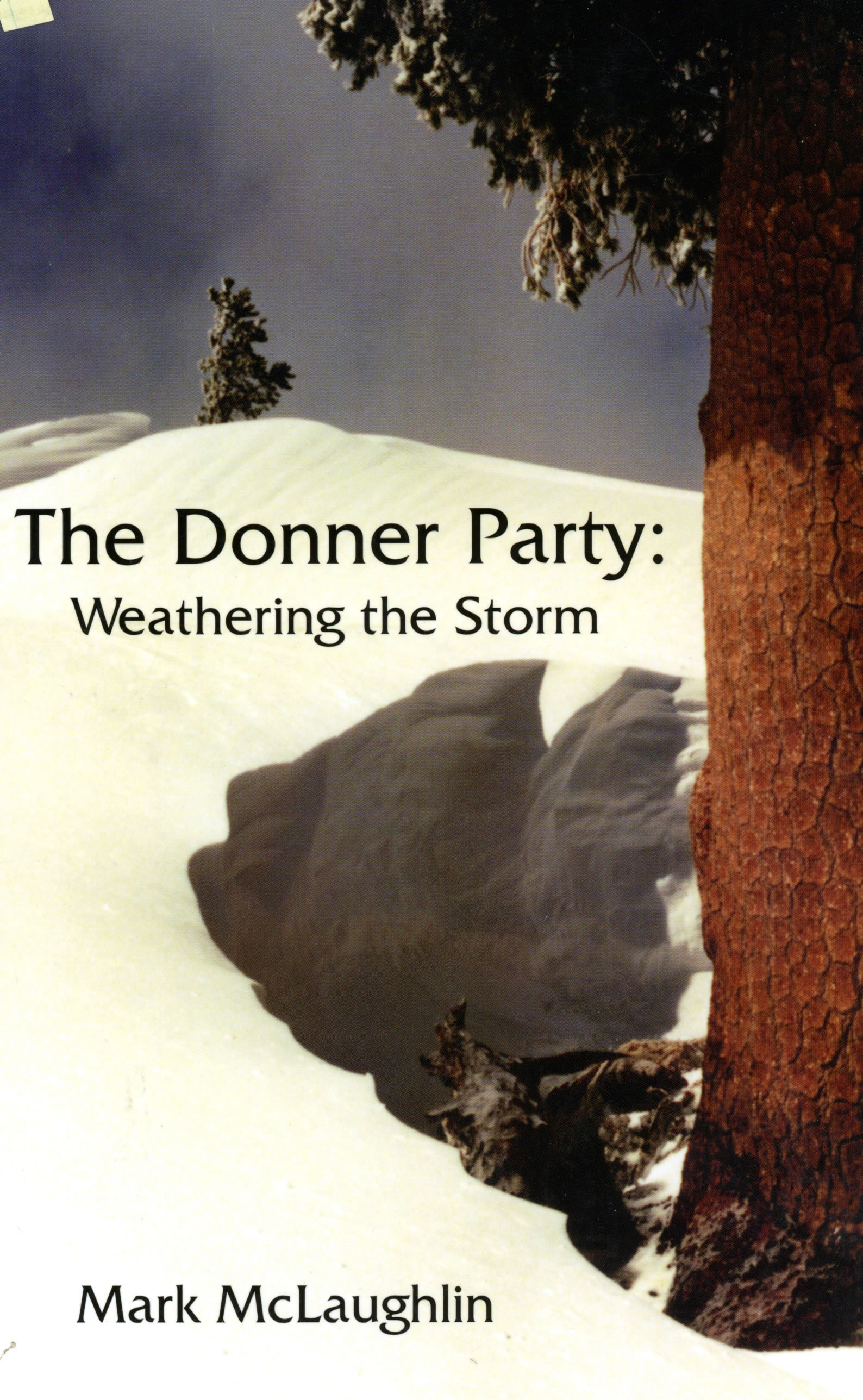
 Donner Party: Weathering the Storm
Donner Party: Weathering the Storm
Mark McLaughlin
2007 179 pages
This is an interesting book which is surprising. It’s not surprising that Mark McLaughlin wrote a good book. He’s written other good books (See the January, ’13 Heirloom for a review of From Longboards to the Olympics) and writes prolifically and well about local history on the web and in newspapers. He’s a local eminence. What’s surprising is that there has been so much written about the Donner Party, starting with news reports while the emigrants were still in the mountains. There followed sensational newspaper reports, a series of books starting with C.F. McGlashan in 1879, and extending to today (see last month’s review of Saving the Donner Party). The subject fascinates people, or authors anyway.
Last month’s review of Saving the Donner Party pointed out some errors. Some of the author’s evidence was tree rings which he used to extrapolate into weather experienced by the Donner Party. In check that and other assertions in Saving the Donner Party we went to the bookshelf for reference. One book sitting there was Mark McLaughlin’s Donner Party: Weathering the Storm. It has an entirely different emphasis than other books about the Donner Party.
Mark’s expertise is local weather; he is the Storm King after all. That’s the emphasis of this Donner Party book. The focus on the weather and storms makes the emigrants’ plight seem more dire than the simple recitation of who was where, doing what, when, and quantifies the emigrants’ troubles. The snow falls and that affects the emigrants. It was hard to get around. It was hard to get wood. Livestock was buried.
McLaughlin tells the story of the Donner Party and tells it well. The general details of the story do not need to be repeated here. He matches the weather to the emigrants, though, and that makes for a good story. To do that he collates weather information from people to the west in California such as the navy and the army with Patrick Breen’s diary which had weather information.
For example, Fremont took troops south and the troops were caught by a storm. “’The hurricane raging above our heads began to form torrents and cascades along our track. The narrow mule-path we were following became the bed of a foaming mountain river…‘ Shoeless and coatless, and hugging their arms under their thin blankets, many of them sank down, benumbed and exhausted. One Man said, ‘It was as if the ocean which lay at the foot of that mountain had lifted up and poured bodily over them.’” That storm, of course, was soon to hit the Sierra and the emigrants at Donner Lake. Just a bit later Patrick Breen reported a steady rain followed by two feet of snow and, according to McLaughlin, “another day of slow starvation.” The snowpack was nine feet deep after the storm. When the emigrants cut firewood it fell into the loose snow and was buried. Emigrants were eating “boiled strips of ox hides…disgusting gluey residue.” That was at the lake.
The Forlorn Hope was caught in the storms without shelter and they were on the east side of the summit where the storms were more intense than on the east, over the Sierra Crest. The navy in Monterey reported in the last week of December, ’46 more rain. It would soon be going east to meet the Forlorn Hope and make their travel more difficult and more miserable.
With temperatures low and rain and snow coming with storm after storm. Add to the that the feeling of desperation at being trapped, there being no food, being crammed into small primitive cabins at Donner Lake and tents at Alder Creek, and worrying family members, existence must have been miserable.
Using his weather knowledge Mark gives general information, for example explaining the formation of dense fog at Donner Lake, that the average low in winter was 14 degrees and the average maximum was 40 degrees. This is important because it sets out the conditions for the emigrants at the lake. It was cold and it was damp. The emigrants probably never get really warm or really dry.
There are other topics as well: Manifest Destiny the background of members of the Donner Party, John Sutter, Lansford Hastings’ book that steered the Donners wrong, what was happening in California as the same time (Bear Flag Revolt, John Fremont.” These all round out the narrative.
There are nice contemporary and historical pictures the book.
McLauglin makes good use of quotes too to humanize the story, ”The Snow came with blinding fury and being unable to build cabins we put up brush sheds, covering them with limbs from pine trees.” (Jean Baptiste Trudeau talking about the Alder Cr. Campsite). “All lay down on the snow, and from exhaustion were soon asleep. In the night, I felt something impeding my breath. A heavy weight seemed to be resting upon me. Springing up to a sitting posture, I found myself covered with freshly-fallen snow. The camp, the cattle, my companions had all disappeared. All I could see was snow everywhere. I shouted at the top of my voice. Suddenly, here and there, all about me, heads popped up through the snow.” (Louis Keseberg)
At the end there are some extra sections which add to the story: what happened to whom afterwards, archeology and new discoveries resulting from archeological searches, a discussion of snow depth and the winter of ’47, and a host of quotes to support more and then less than normal snowfall.
All in all it’s a satisfying book even if you’ve read about the Donner Party before.